|
1 cup zesty Italian dressing
2 pounds beef for stew, cut into 1-inch chunks
6 slices bacon
8 oz sliced fresh mushrooms
1 large onion, chopped
4 carrots, cut into large chunks
1-1/2 lb. potatoes, peeled, cut into chunks
1 can (14 ½ oz.) stewed tomatoes, undrained
1 can (14 ½ oz.) beef broth
1 cup frozen peas
2 tsp salt
1 tsp pepper
Pour dressing over beef in shallow glass dish. Refrigerate 30 min up to 8 hours.
Meanwhile, cook bacon in large saucepan until crisp. Remove bacon and discard all but 1 tablespoon drippings. Drain bacon on paper towels and chop.
Add mushrooms and onions to saucepan; cook on medium high heat 10 minutes. Add beef, carrots, potatoes, tomatoes, broth, bacon, salt and pepper to saucepan; stir.
Bring to boil then reduce heat to simmer. Cover and cook, 1.5 hours or until meat is done. Add peas the last 15 minutes
|
|
|
|
| |
|
Supreme survivors, ferns still flourish 325 million years after their first appearance on Earth. Along with cycads, horsetails and conifers, ferns dominated the flora of an era long before the advent of flowering plants, making a major contribution to the world's coal reserves along the way. Coal forests were once the vast swaths of wetlands that covered much of the Earth's tropical lands during the Paleozoic era. As vegetation from these forests died, they did not completely decay but were turned into organic material or peat. Eventually, heat and pressure transformed peat into the coal we use today.
Ferns differ from seed-producing plants in a number of ways. Their reproductive system is primitive, reproducing by spores, the equivalent of seeds in modern flowering plants. Spore cases, in which millions of individual dust-like spores are produced, form on the backs of leaflets. When the spores ripen and are released, they float on the breeze. If a spore lands in a moist area, germination takes place and a tiny leaflet grows. Later, male and female cells form on the back of the young leaflet. It is at this stage that fertilization takes place. Water, which allows the cells to make contact, is vital for fertilization.
Probably no group of plants display such diversity. Ferns are found under the cool shade of trees and in tropical areas of heavy rainfall. Ferns fill many niches. They grow as vines, ascending tree trunks; as epiphytes on trunks and branches of trees; as lithophytes clinging to rocks and cliff faces, and sometimes as aquatic plants. There are just over 10,000 different species of ferns.
Knowing about ferns and how they grow in nature may explain why I've never had any luck keeping them alive as a houseplant. Room temperatures that are comfortable for us are too warm for many ferns. Ferns don't like it too hot during the day, preferably below 72 degrees Fahrenheit.
Ferns prefer nighttime temperatures 60 degrees Fahrenheit or below. Humidity levels of 30 percent are about as low as most ferns will tolerate. Forty to 50 percent humidity is better. A soil mixture for ferns must hold adequate but not excessive moisture, contain organic matter and be well aerated so air can move through the soil. Over-or under-watering your fern is extremely easy to do. Even though I would love to bring a fern home, I now know it's best to enjoy them just where they are in the forest's shade.
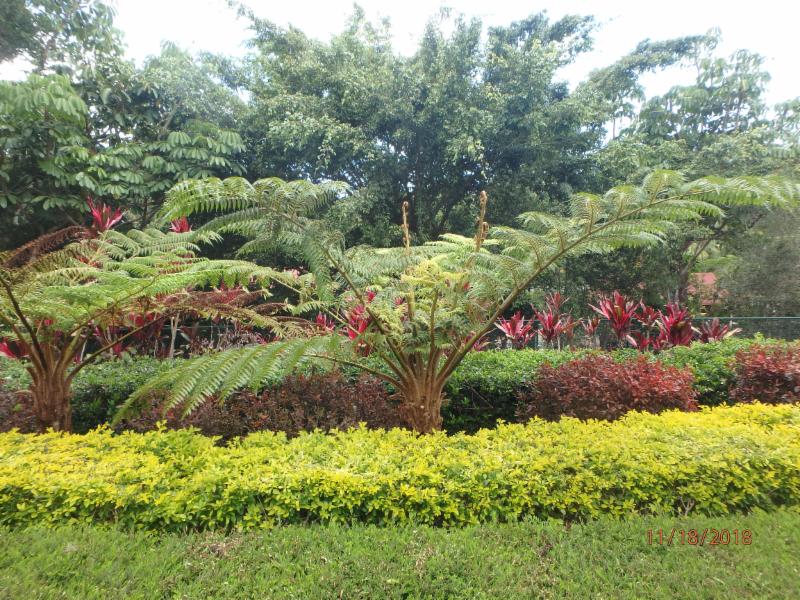
Ferns exhibit tremendous variation in size, ranging from tiny delicate ferns to the Giant King Fern, the largest fern in the world, with fronds 16 feet in length and a base 3 feet in diameter. Port Douglas, Australia.

Ferns have no true leaves- their leaf like expansions
are termed fronds.

Spore cases are usually small and collected into clusters
or patches on the underside of fertile fronds.
Amazon rain forest, Peru.
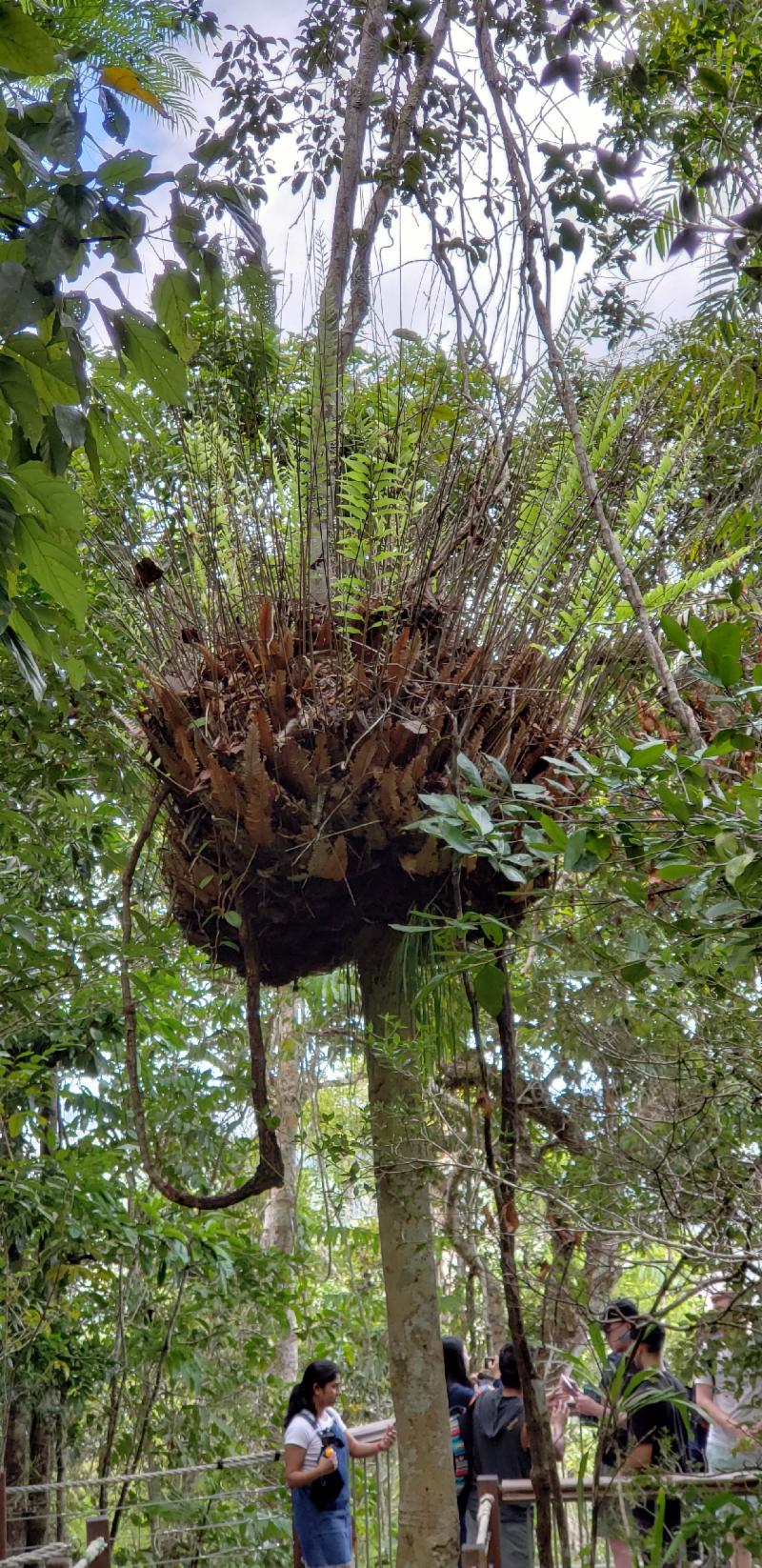
Epiphytic ferns such as this huge basket fern clings to a tree trunk. Cairns Australia.
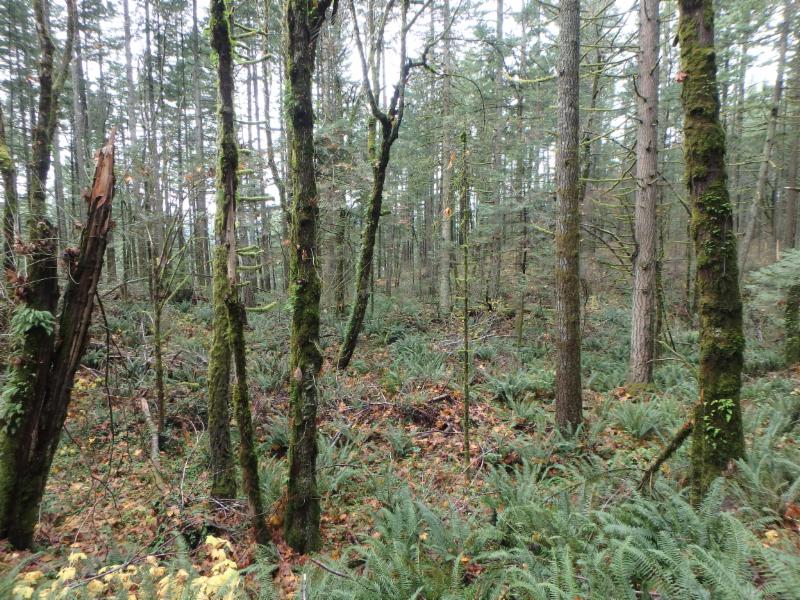
Fern bed under a forest canopy Mt. Hood National Forest, Washington.
For more information on ferns.
|
|
There is an epic problem in the green industry that is so wide-spread and has so many layers of complexity, I scarcely know where to begin. It's called Stem Girdling Roots. These roots dramatically shorten the lives of trees, some dying in as little eight years when they could have lived for 100 or longer. This is a wasteful, costly and sometimes emotionally devastating problem.
Stem girdling roots are roots that circle the trunk, slowly killing the tree by strangling it. Girdling roots reduce the uptake of water, minerals and sugars as the root presses against the trunk. The injury increases with time as the root and the trunk each grow against each other. The problem starts at the nursery that produces a tree that is root-bound or has been repotted numerous times and every time the root flare gets deeper and deeper. Then a contractor digs a hole, plops the tree in and calls it a day. The homeowner then over-mulches. Sometimes the tree itself can be prone to circling roots, especially maples and lindens. Like the Titanic; more than one error contributed to its sinking.
Healthy roots will grow away from the trunk like spokes on a bicycle wheel. These roots offer stability to the tree. First main order roots, branch roots and fine roots normally occur near the soil surface where there is plenty of moisture and oxygen. The normal tree has a naturally wide base with partially exposed roots.
When a tree is planted too deep, the stem is underground where is doesn't belong. When growing roots touch the stem, they follow the path of least resistance and grow around and around it. When mulch is piled too high over the root flare and against the stem, roots love to grow there. Small roots over time become big, strangling roots. Roots can't strangle a tree if the stem is above ground.
There are telltale symptoms that girdling roots may be present.
The tree has the look of a phone pole, going straight into the ground without a flare at the base
. The leaves are smaller than normal, scorched, or have premature fall color. The trunk is cracked or weeping. The canopy is dying back at the top. And the tree doesn't grow. I have seen trees with 14 years in the landscape that are still the same size as the day they were planted.
Here is my tip for planting trees: Find the first root flare below the trunk and keep that root flare visible after planting. This may mean taking some soil off the top of your potted tree to find this root. Cut the outside layer of root-bound container trees to remove the circling roots there.
Choose a contractor that will plant according to ANSI (American National Standards Institute) Standards. Wire baskets, burlap or other material, twine and cord, should all be removed from at least the top half of the root ball when the tree is set in the hole. Soil should be removed from the top of the root ball until the tops of the buttress roots are exposed. This should be at or slightly above the surrounding ground level. Keep in mind that warranties only last for a year, so the tree owner usually has to eat the replacement cost caused by non-ANSI practices or poor quality nursery stock. Because it can take upwards of eight years for the tree to decline and die, it is nearly impossible to place blame where it is due.
And tree owners: don't circle trees with stuff. Edging, boulders and walls will bury the root flare. Mulch should be kept at least a foot away from the trunk.
The green industry has little incentive to change. The vast majority of trees purchased and planted are based on the low bidder. It just has to look good today and all is well. Most likely the contractor is not going to be there when the problems arise eight years from now. We need to think more about the long-term, but unfortunately, we live in a very immediate society.

The maple on the left exhibits premature fall color and a sparse canopy, symptoms of girdling roots. The maple to the right was planted at the same time, did not develop girdling roots.
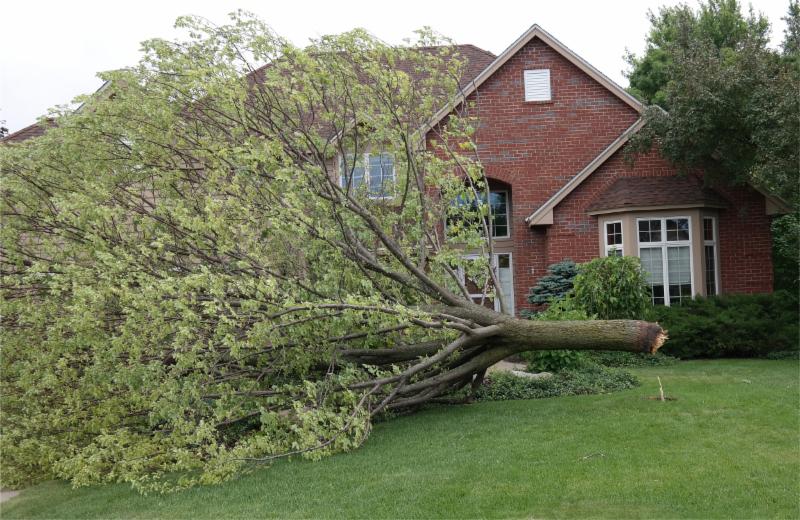
Healthy trees usually withstand winds over 70 mph, while trees that have lost their structural support at the base can topple in much lower winds, and in some cases when there is no wind at all.

Any buildup around the base of a tree, especially walls or mulch rings, can create girdling roots.

Circling roots are just below the grass. Fortunately for this maple, I was able to cut the offending roots and now this tree is growing nicely.
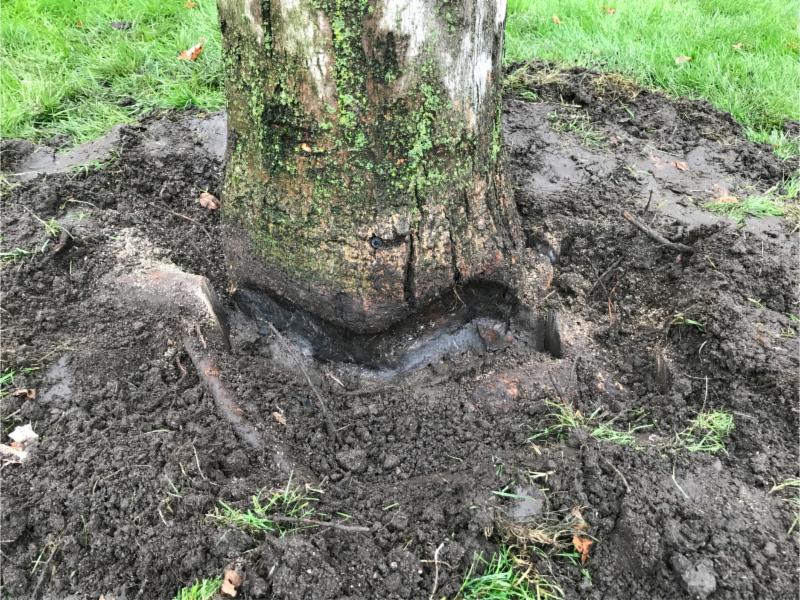
With part of a stem girdling root removed, the compression to the tree's trunk is evident. This tree died.
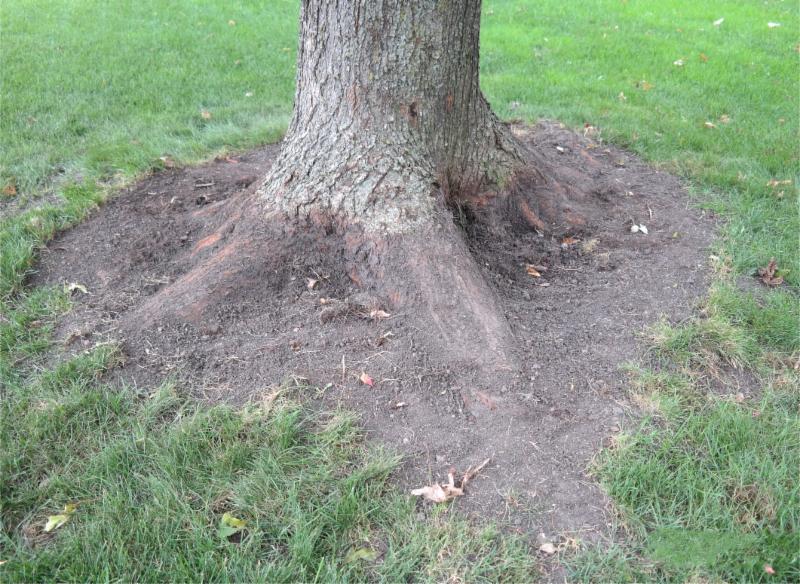
Healthy root systems will fan out at the base of the tree, like the bottom of an elephant's foot. The root flare should be uncovered and visible.
|

Thanks for reading.
Happy Planting!
Faith Faith Appelquist President & Founder
|
|
|